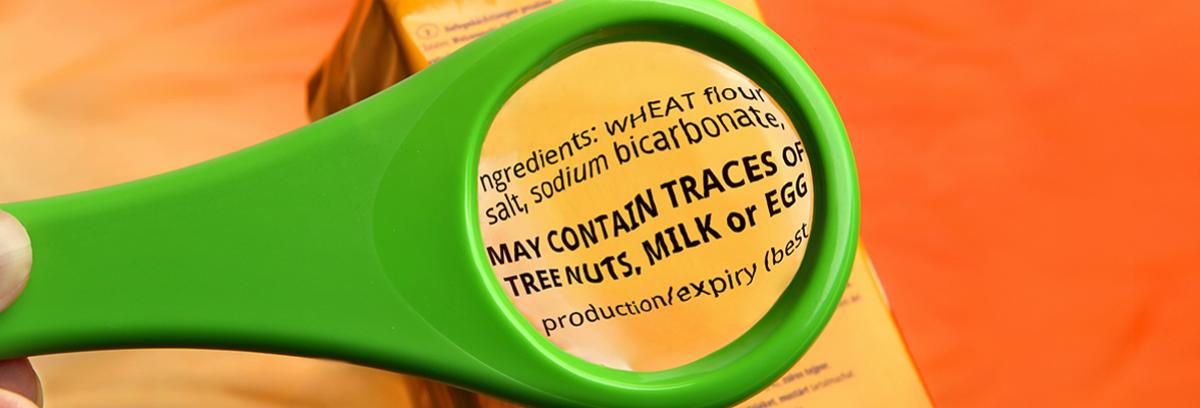
THE BASICS OF THE FOOD LABEL
January 27, 2021
|
9 min
As consumers, we need to make wise choices about the food we eat. This is where food labels come in. It can help you make informed decisions towards choosing good nutrition and health. Knowing how to read food labels also assures you that you are getting more value for your money and protects you from incorrect claims.
HOW DO I CHECK THE LABEL?

THE BASICS OF THE FOOD LABEL
Labels are designed so that consumers are provided with useful information about the product and how this would fit into their daily diets. The following are a big help: Look at the list of ingredients. This gives an overview of the product’s “recipe”. Ingredients are arranged from the most to the least amount.
If a product lists its ingredients as: Sugar, Water, Artificial Flavor, Juice Concentrate – this means that the bulk of the product is sugar. The ingredient with least amount is juice concentrate. Compute % calories from fat. This indicates the calories contributed by fat per serving. For example, a food label reads: Amount per Serving Calories 200 Calories From Fat 50. Simply calculate the ratio of calories from fat to calories per serving. 50/200 x 100% = 25%. Meaning, of the 200 calories a serving of this product gives you, 25% comes from fat! For foods with fat % of above 25%, eat them in moderation. Look for foods that have 25% or less fat calories per serving! Be aware of health-sensitive ingredients. These include fat, sugar, and salt.
The rule is “Less is better”. Frequent high intake of these ingredients is associated with obesity, kidney diseases, heart problems, and diabetes. Watch the nutrient amounts. Read the Nutrition Facts Label for nutrient amounts. These are given either by % Daily Values (which is US-based) or the Recommended Energy and Nutrient Intake (%RENI, which is locally based). This allows you to compare nutrient amounts per serving among different brands of a particular food.
For example, the label of an iced tea product reads:
| Serving Size 200 mL | Per 9g | %RENI |
| Vitamin C | 37.5 mg | 50% |
Remember that this %RENI applies to most nutrients, including calories, protein, and various vitamins and minerals. Get more value.
What’s the real cost per serving of a product?
Check how many servings you can make from a big pack! There are 2 items you’ll need to look at: Net Weight is the amount of product inside the pack. This can be found near the bottom of a pack, usually at the front of the packaging. Serving Size is the amount (usually in grams or milliliters) per serving of a product. Divide Net Weight by Serving Size. This gives you the number of servings in the pack.
With the result you get, do you think the pack is worth the price being charged?
You may want to pick out a different pack size. Choosing Low Energy-Dense Foods Go for low energy-dense foods 1. Energy density refers to the ratio of calories to the weight of the food. Less calories per portion size is generally better for weight management. Eating low energy-dense food will help you feel full because of the relatively bigger portion size, but low caloric amount. If a label reads: Serving Size 40 g. Servings per Container 5. Amount per Serving Calories 180 – divide the calories per serving by the weight of the serving in grams: 180 calories ÷ 40g = 4.5
Compare this value with the following standard list for Energy Density:
| Energy Density | Examples | |
| Below 0.6 | Very low | Low fat milk, yogurt |
| 0.6 – 1.5 | Low | Cottage cheese, pasta |
| 1.5 – 4 | Medium | Hard candy, pretzels, cheddar cheese |
| 4 – 9 | High | Crackers, chips, chocolate, cookies |
Remember to limit your intake of medium and high energy-density foods. If you want to manage your weight, go for lower energy-density foods!
UNDERSTANDING PRODUCT CLAIMS REVIEW THE HEALTH CLAIMS
A product can claim that it is high in fiber and therefore can lower incidence of heart disease. A decreased risk of heart disease is associated with an intake of 14 g of fiber for every 1,000 calories consumed in a day. That’s equivalent to around 25-30 g of fiber per day. Compare with what is on the label. Here are other facts you can compare with what’s on the label:
* Calcium can reduce the risk of osteoporosis. Check if the product has at least 115 mg of calcium
* A low-fat diet can lower risk for developing certain types of cancer.
* For solid products, go for 3g or less per 100g serving
* For liquid products, go for 1.5g or less per 100 ml
* The label can provide this health information to consumers to enable them to develop healthy dietary practices. Understand nutrient content claims. They are not always as they seem!
CHECK THE LABEL!
The Food Label was designed to help people choose foods well. By knowing how to use it, you can understand how a specific food item can fit into your overall diet. You can more effectively and efficiently select foods and choose between products. So go ahead, check the label!
References:
1. Rolls, Barbara, PhD. Energy Density and Nutrition in Weight Control Management 2. Callanta, Luz Felicidad Socrates, Rnd, Msn